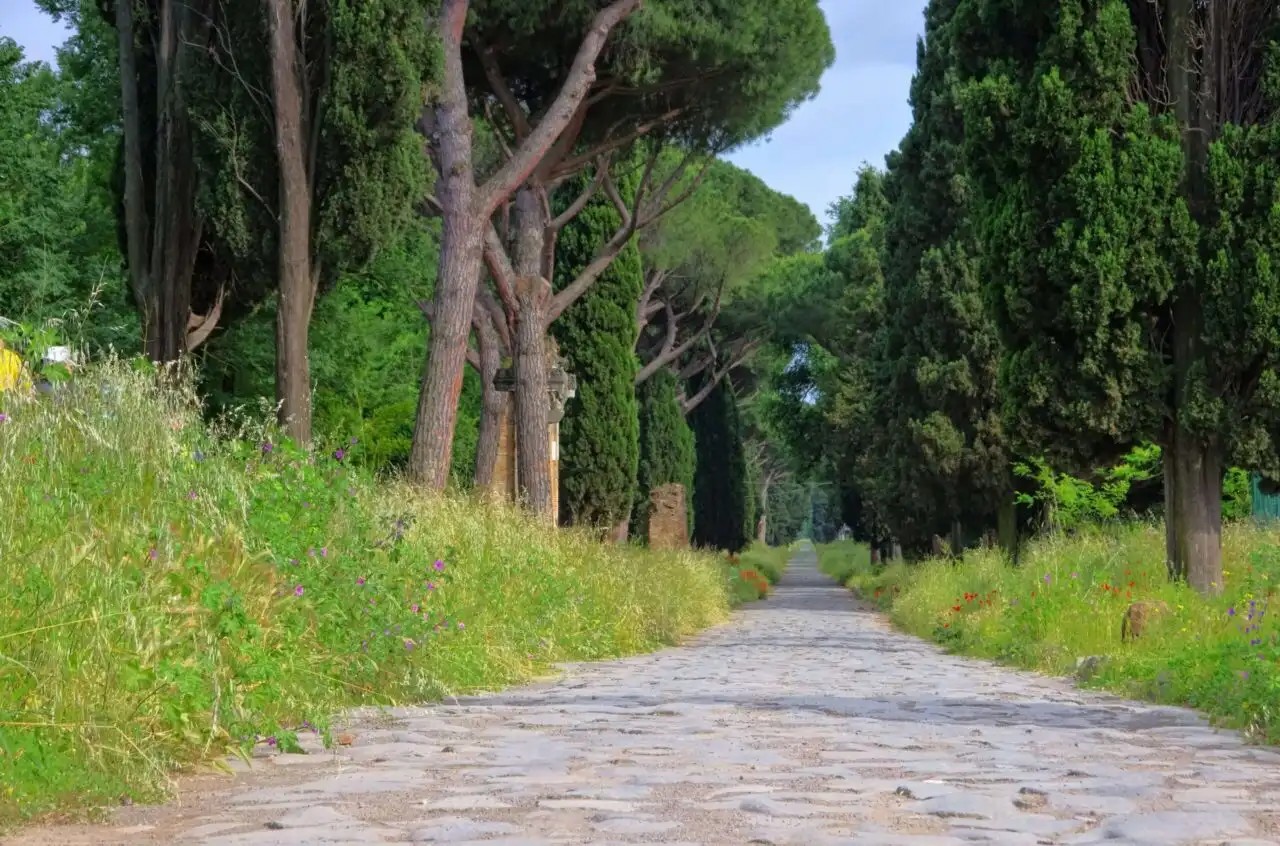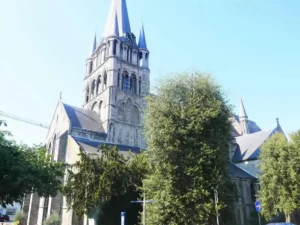The question of Who Started Traveling And Tourism has a complex and fascinating answer that spans millennia. SIXT.VN is here to guide you through the captivating evolution of travel, from ancient explorations to the modern tourism industry. Discover the historical roots of travel and tourism, and let SIXT.VN assist you in creating your own unforgettable journey in Vietnam, complete with seamless airport transfers, comfortable hotel bookings, exciting tour packages, and more!
1. What Were the Earliest Forms of Travel?
The earliest forms of travel were primarily driven by necessity, encompassing migration, trade, and military expeditions. While these movements laid the groundwork, they didn’t necessarily constitute “tourism” as we understand it today.
1.1. Ancient Migrations and Trade Routes
Human migration is the oldest form of travel. Nomadic tribes followed animal herds and seasonal changes, traversing vast distances. Trade routes, like the Silk Road, facilitated the exchange of goods between East and West, encouraging merchants and adventurers to journey across continents.
1.2. Military Campaigns and Pilgrimages
Military campaigns were another significant driver of ancient travel, with armies marching long distances to conquer new territories. Religious pilgrimages, such as journeys to sacred sites in Egypt or Mesopotamia, also motivated travel for spiritual purposes.
2. When Did Travel Start to Resemble Modern Tourism?
Travel began to resemble modern tourism with the rise of organized travel for leisure and exploration, particularly within the Roman Empire. The Romans were pioneers in turning travel into an experience for enjoyment.
2.1. The Roman Empire: Early Leisure Travel
Wealthy Romans were among the first to travel purely for leisure. They built villas in coastal areas and countryside retreats, traveling to escape the city and enjoy the scenery. According to a study by the Ancient History Encyclopedia, Roman elites often traveled for recreation, seeking out thermal baths, cultural events, and scenic landscapes. The extensive Roman road network facilitated easy and safe travel.
2.2. The Rise of “Culture Tourists”
Romans also traveled to experience different cultures, visiting famous landmarks, attending theatrical performances, and exploring historical sites. They admired Greek art and architecture, often traveling to Greece and other parts of the Mediterranean for cultural enrichment. It is evident that Romans valued traveling to broaden their understanding and appreciation of diverse cultures.
 Ancient Roman road highlighting travel history
Ancient Roman road highlighting travel history
3. How Did the Middle Ages Influence Travel and Tourism?
The Middle Ages saw a shift in travel motivations, with religious pilgrimages becoming a dominant form of travel. This era transformed travel into a spiritual experience.
3.1. Pilgrimages: A Spiritual Journey
Pilgrimages were a central aspect of medieval life. Christians traveled to holy sites like Jerusalem, Rome, and Santiago de Compostela. These journeys were often arduous, covering vast distances on foot. The pilgrimage routes led to the development of accommodations and services along the way. Guest houses and monasteries offered lodging and sustenance to pilgrims.
3.2. The Significance of Santiago de Compostela
Santiago de Compostela in Spain was one of the most popular pilgrimage destinations. Pilgrims from all over Europe traveled to visit the shrine of St. James. The routes leading to Santiago de Compostela were dotted with churches, hostels, and other facilities, contributing to the growth of tourism-related infrastructure.
Tip: Explore ancient pilgrim routes in Europe. Look for scallop shells on roads in Belgium and the Netherlands that lead to local Saint-Jacob’s churches, historically linked to pilgrims. In Antwerp, follow the scallop shell trails.
 Pilgrim scallop shell from Tournai in Belgium
Pilgrim scallop shell from Tournai in Belgium
 Saint Jacques church in Tournai Belgium
Saint Jacques church in Tournai Belgium
4. What Was the “Grand Tour” and Its Impact on Travel?
The “Grand Tour” was a customary trip through Europe undertaken by young European aristocrats, marking a pivotal moment in the evolution of tourism and cultural exploration. It was an educational journey designed to broaden horizons.
4.1. The Educational Journey for Aristocrats
In the 17th and 18th centuries, young aristocrats embarked on the Grand Tour as part of their education. They visited major European cities like Paris, Rome, and Venice to study art, architecture, and history. This journey was seen as essential for their intellectual and cultural development. According to research from the Journal of Tourism History, the Grand Tour became a rite of passage for young elites, shaping their understanding of European culture and society.
4.2. Key Destinations and Cultural Immersion
Key destinations on the Grand Tour included London, Paris, Rome, and Venice. These cities offered rich cultural experiences. Travelers visited museums, attended operas, and explored historical sites. The Grand Tour fostered a sense of cultural exchange and appreciation.
5. When Did Modern Tourism Truly Begin?
Modern tourism began in the 19th century with advancements in transportation, particularly the development of the railway system. This period marked a significant shift in how people experienced travel.
5.1. The Railway Revolution
The invention of the railway in the 1840s revolutionized travel. Trains made it faster and more affordable to travel long distances. Railway networks expanded rapidly across Europe and North America, connecting cities and regions like never before.
5.2. Thomas Cook and the First Travel Agency
Thomas Cook founded the first travel agency in 1841. He organized group trips using the new railway system, arranging transportation and accommodation. Cook’s travel agency made travel accessible to the middle class. According to a study by the Tourism Management journal, Thomas Cook’s innovations laid the foundation for the modern tourism industry, offering packaged tours and standardized travel services.
 An old train, a symbol of travel history
An old train, a symbol of travel history
6. How Did the 20th Century Transform Travel and Tourism?
The 20th century witnessed unprecedented growth in travel and tourism, fueled by advancements in air travel and the rise of mass tourism.
6.1. The Age of Air Travel
Air travel transformed the tourism industry. After World War II, commercial aviation expanded, making international travel more accessible and affordable. Jet planes reduced travel times significantly, allowing people to explore distant destinations.
6.2. Mass Tourism and Its Impact
Mass tourism developed in the 1960s with the advent of package holidays and affordable airfares. Tourist destinations experienced rapid growth. This led to both economic benefits and challenges related to over-tourism and environmental impact.
7. What Are the Key Motivations for Travel Throughout History?
Throughout history, the motivations for travel have evolved, ranging from necessity to leisure and cultural enrichment.
7.1. Necessity vs. Leisure
Early travel was primarily driven by necessity. People migrated in search of food and shelter. Trade and military campaigns necessitated long-distance travel. Over time, leisure became a more prominent motivation, with wealthy individuals traveling for relaxation and entertainment.
7.2. Cultural and Educational Pursuits
Cultural and educational pursuits have always been important motivations for travel. Romans traveled to Greece to study art and philosophy. The Grand Tour was designed to educate young aristocrats. Today, many travelers seek authentic cultural experiences.
8. How Has Technology Shaped Modern Travel and Tourism?
Technology has revolutionized modern travel and tourism, making it easier to plan trips, navigate new places, and share experiences.
8.1. The Internet and Online Booking
The internet has transformed the way people plan and book travel. Online travel agencies (OTAs) and booking platforms have made it easy to compare prices and find the best deals. Travelers can access information about destinations, accommodations, and activities from anywhere in the world.
8.2. Mobile Apps and Navigation
Mobile apps have made it easier to navigate new places. GPS-enabled maps provide real-time directions. Translation apps help travelers communicate with locals. Travel apps offer recommendations for restaurants, attractions, and hidden gems.
9. What Are the Current Trends in Travel and Tourism?
Current trends in travel and tourism include sustainable travel, experiential travel, and personalized travel experiences.
9.1. Sustainable and Responsible Travel
Sustainable travel is gaining popularity as travelers become more aware of the environmental and social impact of their trips. Sustainable practices include reducing carbon emissions, supporting local communities, and preserving natural resources. Responsible travel focuses on respecting local cultures and traditions.
9.2. Experiential Travel and Authentic Experiences
Experiential travel emphasizes immersive and authentic experiences. Travelers seek opportunities to connect with local communities, learn new skills, and engage in meaningful activities. This trend includes culinary tourism, adventure travel, and cultural immersion programs.
9.3. Personalized Travel Experiences
Personalized travel experiences cater to individual preferences and interests. Travel companies are using data and technology to create customized itineraries and recommendations. This trend includes bespoke tours, curated activities, and personalized service.
10. Planning Your Trip to Vietnam with SIXT.VN: A Modern Travel Solution
SIXT.VN offers comprehensive travel services in Vietnam, ensuring a seamless and enjoyable experience. From airport transfers to hotel bookings and guided tours, SIXT.VN caters to all your travel needs.
10.1. Airport Transfers for a Smooth Arrival
SIXT.VN provides reliable airport transfer services in Hanoi and other major cities in Vietnam. Professional drivers ensure a comfortable and stress-free journey from the airport to your hotel. Book your airport transfer with SIXT.VN for a smooth start to your trip.
10.2. Hotel Bookings to Suit Every Budget
SIXT.VN offers a wide range of hotel options to suit every budget and preference. Whether you are looking for luxury accommodations or budget-friendly hotels, SIXT.VN has you covered. Browse our selection of hotels in Hanoi and other popular destinations in Vietnam.
10.3. Exciting Tour Packages to Explore Vietnam
SIXT.VN offers exciting tour packages that allow you to explore the best of Vietnam. Choose from city tours, cultural excursions, and adventure trips. Our knowledgeable guides will take you to the most iconic landmarks and hidden gems in Vietnam. Discover the beauty and culture of Vietnam with SIXT.VN.
10.4. Seamless Booking Process with SIXT.VN
Booking your travel services with SIXT.VN is easy and convenient. Visit our website, browse our services, and make your reservations online. Our customer service team is available to assist you with any questions or concerns. Experience the convenience of booking with SIXT.VN.
Ready to explore Vietnam? Let SIXT.VN handle all your travel needs. Visit SIXT.VN today to book your airport transfer, hotel, and tours!
Navigating a new country can be challenging. SIXT.VN is here to make your Vietnam travel experience easy and memorable. With SIXT.VN, you can enjoy personalized service, reliable transportation, and exceptional accommodations. Discover the beauty and culture of Vietnam with SIXT.VN as your trusted travel partner.
FAQ: Who Started Traveling and Tourism?
1. Who were the first people to travel for leisure?
Wealthy Romans were among the first to travel purely for leisure, building villas and visiting cultural sites.
2. What was the main motivation for travel during the Middle Ages?
Religious pilgrimages were the primary motivation for travel during the Middle Ages.
3. What was the “Grand Tour”?
The “Grand Tour” was an educational journey through Europe undertaken by young aristocrats in the 17th and 18th centuries.
4. When did modern tourism begin?
Modern tourism began in the 19th century with the development of the railway system and the founding of the first travel agency by Thomas Cook.
5. How did air travel impact the tourism industry?
Air travel made international travel more accessible and affordable, leading to the rise of mass tourism.
6. What are the current trends in travel and tourism?
Current trends include sustainable travel, experiential travel, and personalized travel experiences.
7. How has technology shaped modern travel?
Technology, including the internet and mobile apps, has made it easier to plan trips, navigate new places, and share experiences.
8. What services does SIXT.VN offer for travelers to Vietnam?
SIXT.VN offers airport transfers, hotel bookings, and exciting tour packages to explore Vietnam.
9. How can I book services with SIXT.VN?
You can easily book services with SIXT.VN by visiting our website and making your reservations online.
10. Why should I choose SIXT.VN for my travel needs in Vietnam?
SIXT.VN offers personalized service, reliable transportation, and exceptional accommodations, ensuring a seamless and enjoyable travel experience.
Address: 260 Cau Giay, Hanoi, Vietnam
Hotline/Whatsapp: +84 986 244 358
Website: SIXT.VN
Let SIXT.VN take care of all your travel needs in Vietnam. From the moment you arrive, you’ll experience the best of Vietnamese hospitality and culture. Book your adventure today!



